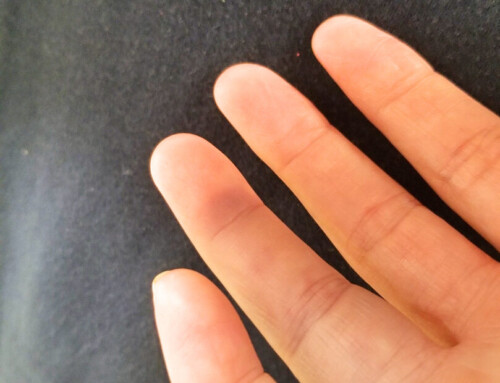
Radiology teaching during medical school is variable, ranging from informal teaching to required clerkships [1]. Many of us likely received an approach to a chest x-ray, but approaches to other studies may or may not have not been taught. We can do better! Enter EM:Rad, a series aimed at providing “just in time” approaches to commonly ordered radiology studies in the emergency department. When applicable, it will provide pertinent measurements specific to management, and offer a framework for when to get an additional view, if appropriate. We recently covered the elbow, wrist, and ankle: now, the foot x-ray.
Learning Objectives
- Interpret traumatic foot x-rays using a standard approach
- Identify clinical scenarios in which an additional view might improve pathology diagnosis
Why the foot matters and the radiology rule of 2’s
The Foot
- The foot is a complex part of human anatomy and is a frequent cause for a visit to the Emergency Department [2].
- Simple foot injuries can have substantial morbidity, including loss of function, arthritis, and impaired quality of life [3].
Before we begin: Make sure to employ the rule of 2’s [4]
- 2 views: One view is never enough.
- 2 abnormalities: If you see one abnormality, look for another.
- 2 joints: Image above and below (especially for forearm and leg).
- 2 sides: If unsure regarding a potential pathologic finding, compare to another side.
- 2 occasions: Always compare with old x-rays if available.
- 2 visits: Bring patient back for repeat films.
An approach to the traumatic foot x-ray
- Adequacy (AP, Oblique, Lateral)
- Bones
- Cartilage/Joints
- Consider an additional view
1. Adequacy
- A standard foot x-ray series consists of the AP, lateral and oblique
- AP: all metatarsals should be visible
- Oblique: should be taken with foot angled 30-40 deg medially
- This view is best used in the evaluation of midfoot and forefoot [5].
- Lateral: should include projection of ankle in addition to foot [5].
- The base of 1st, 2nd, and 3rd metatarsals should align with three cuneiform bones [5].
- The Metatarsophalangeal joints should be clear [5].
2. Bones
- On AP and Oblique:
- Talus (Hindfoot)
- Navicular (Midfoot)
- Cuboid (Midfoot)
- Cuneiforms (Midfoot)
- Metatarsals (Forefoot)
- Phalanges (Forefoot)
- On Lateral:
- Talus (Hindfoot)
- Navicular (Midfoot)
- Calcaneus (Hindfoot)

Figure 1: Foot series: Case courtesy of Andrew Murphy, Radiopaedia.org
3. Cartilage/Joints
- Lisfranc Joint complex, best appreciated on AP and oblique view
- A normal joint complex on AP view:
- Alignment of the lateral edge of the base of the 1st metatarsal and the lateral edge of the medial cuneiform (Figure 2, line 1)
- Alignment of the medial edge of the base of the 2nd metatarsal and the medial edge of the middle cuneiform (Figure 2, line 2) [6]
- A normal joint complex on AP view:

Figure 2: AP view of normal lisfranc complex. Normal alignments along the lateral 1st metatarsal and medial 2nd metatarsal are annotated in red. Case courtesy of Dr Wael Nemattalla, radiopaedia.org
- A normal joint complex on oblique view:
- Alignment of the lateral edge of the shaft of the 3rd metatarsal and the lateral border of the lateral cuneiform (figure 3, line 4)
- Alignment of the medial border of the 4th metatarsal with the medial border of the cuboid (figure 3, line 5) [6].
- A normal joint complex on oblique view:

Figure 3: Oblique view of normal Lisfranc complex. Normal alignments are annotated in red. Case courtesy of Dr Wael Nemattalla, Radiopaedia.org
4. Consider an additional view
“Weight-Bearing” Foot AP or lateral
- When: Obtain a “weight-bearing” view if there is any concern for Lisfranc injury
- Why: Weight-bearing views may not show diastasis of joint [2].
- Pearl: Consider CT as you may diagnose concomitant fractures
Calcaneus view
- Check out the EMRad ankle post for more information on this view.
References
- Schiller, P. et al. Radiology Education in Medical School and Residency. The views and needs of program directors. Academic Radiology, Vol 25, No 10, October 2018. PMID: 29748056
- Wedmore, I. et al. Emergency Department evaluation and management of foot and ankle pain. Emerg Med Clin N Am 33. Issue 2. May 2015. PMID: 25892727
- Flaherty, E. et al. Emergency Imaging of Foot Trauma. Semin Roentgenol. Volume 51. Issue 3. Dec 2015. PMID: 27287956.
- Chan, Otto. Introduction: ABCs and Rules of Two. ABC of Emergency Radiology, Third Edition. Edited by Otto Chan. 2013 John wiley & Sons, Ltd. Published 2013.
- Nicholson, D et al. The Foot. ABC of Emergency Radiology. BMJ. Volume 307. October 1993. PMID: 7902156
- Englanoff, G. et al. Lisfranc Fracture-dislocation: A frequently missed diagnosis in the Emergency Department. Annals of Emergency Medicine. Volume 26. Issue 2. August 1995. PMID: 7618790




